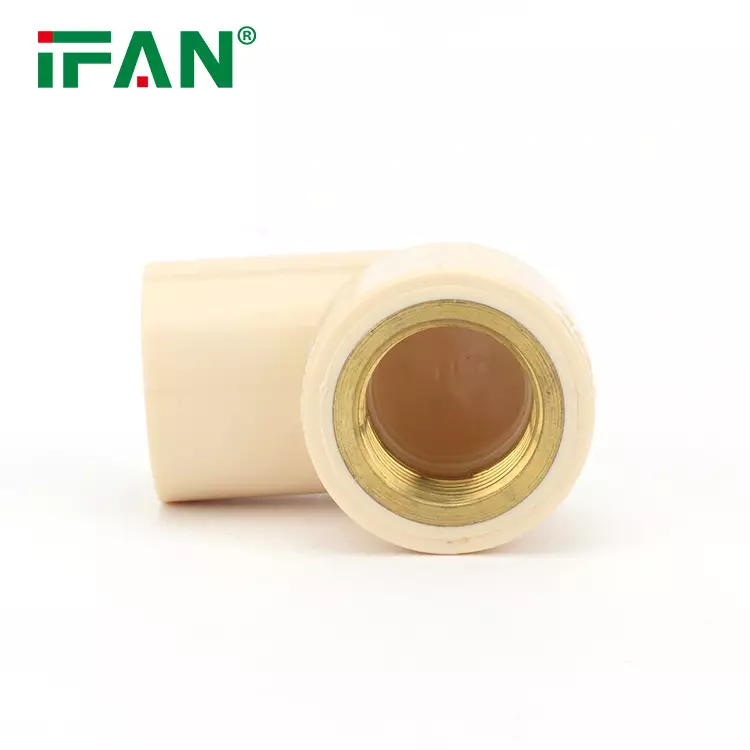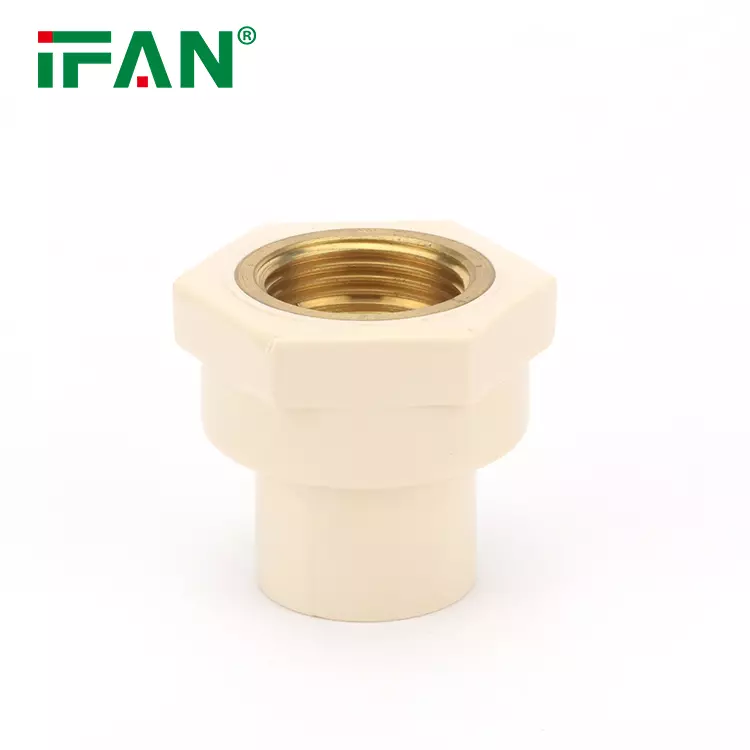CPVC (chlorinated polyvinyl chloride) is a popular material for plumbing systems due to its durability, affordability, and chemical resistance. When working with CPVC pipes, selecting the appropriate fittings is crucial for ensuring secure connections and leak-free installations. This article explores the different types of fitting used with CPVC pipes and provides additional information about PVC and CPVC fittings.
Types of Fittings for CPVC Pipes:
1.CPVC Solvent Cement Fitting:
CPVC solvent cement fittings are the most commonly used fitting in CPVC plumbing systems. These fittings are joined to the pipes using solvent cement, which creates a strong and permanent bond. The solvent cement is applied to both the fitting and the pipe, and when they are pressed together, the cement melts the surfaces, fusing them into one solid piece. CPVC solvent cement fittings are available in various types, including couplings, elbows, tees, adapters, and reducers, allowing for versatile and flexible plumbing installations.
2.Threaded Fittings:
Threaded fittings are often used when connecting CPVC pipes to fixtures or other plumbing components that have threaded connections. These fittings have either male or female threads, which allow them to be screwed onto the corresponding threaded pipe or fixture. Threaded CPVC fittings provide a convenient and reliable method for creating secure connections without the need for adhesive or soldering. They are commonly used in applications where disassembly may be required, such as in irrigation systems or installations that may require future modifications.
3.Compression Fittings:
Compression fittings offer an alternative method for connecting CPVC pipes without the use of heat or special tools. These fittings consist of a compression nut, sleeve, and insert. The compression nut is tightened onto the fitting, compressing the sleeve against the insert and creating a watertight seal. Compression fittings are particularly useful in situations where the pipes need to be easily disassembled or repositioned, such as in temporary installations or systems that may require frequent adjustments. They are commonly used in irrigation systems, water filtration systems, and other applications where flexibility is desired.
4.Transition Fittings:
Transition fittings are used when connecting CPVC pipes to pipes made of different materials, such as copper, PEX, or galvanized steel. These fittings have CPVC on one end and the compatible material on the other end, allowing for a secure and leak-free connection between the two pipe types. Transition fittings are essential in situations where a transition from CPVC to another material is necessary, such as when connecting a CPVC supply line to a copper water heater or a CPVC drain line to a cast iron sewer pipe. These fittings ensure compatibility and reliability in mixed-material plumbing systems.
PVC vs. CPVC Fitting:
PVC (polyvinyl chloride) and CPVC (chlorinated polyvinyl chloride) fitting may appear similar, but they have distinct differences in terms of material composition and temperature ratings. PVC fittings are typically used in cold water applications, such as irrigation systems or drainage systems. They are not suitable for use in hot water supply systems because they have a lower temperature rating compared to CPVC fittings. On the other hand, CPVC fitting are specifically designed for hot water supply systems and can withstand higher temperatures. They have a higher temperature rating, typically up to 200°F (93°C), making them ideal for use in residential, commercial, and industrial applications where hot water is involved. It is important to select the appropriate fittings based on the specific needs of the plumbing system to ensure proper performance and longevity.
Considerations for CPVC Fittings:
1.Compatibility:
When choosing fitting for CPVC pipes, it is crucial to ensure compatibility between the fitting and the pipes. CPVC pipes and fittings are specifically designed to work together, ensuring a proper fit and a reliable connection. Using incompatible fittings can result in leaks, system failure, and potential health hazards. It is recommended to choose fittings from reputable manufacturers that provide compatibility information and guidelines to ensure a successful installation.
2.Proper Sizing:


Fitting should be properly sized to match the diameter of the CPVC pipes. Using incorrectly sized fittings can lead to weak connections and potential leaks. Each type of fitting has specific sizing requirements, and it is important to follow the manufacturer’s guidelines to select the right fittings for the pipe size. This ensures a snug fit and optimal performance of the plumbing system.
3.Quality and Certification:
When selecting CPVC fitting, it is essential to choose high-quality products that meet industry standards and have appropriate certifications. Look for fittings that are NSF International certified for use in potable water systems. Quality fittings not only ensure reliable connections but also contribute to the overall durability and longevity of the plumbing system. Reliable manufacturers provide warranties and technical support, giving you peace of mind in your choice of fittings.
4.Installation Techniques:
Proper installation techniques are crucial for the successful performance of CPVC fittings. Follow the manufacturer’s instructions and recommended installation procedures to ensure a secure and leak-free connection. Proper surface preparation, including cleaning and deburring the pipe ends, is important to achieve a strong bond with the solvent cement or a tight seal with compression fittings. Adhere to the curing times specified by the manufacturer before pressurizing the system. By following these installation techniques, you can avoid potential issues and ensure the long-term integrity of the plumbing system.
Conclusion:
Selecting the right fittings is essential for successful CPVC plumbing installations. CPVC solvent cement fittings, threaded fittings, compression fittings, and transition fitting are commonly used with CPVC pipes. Understanding the differences between PVC and CPVC fittings is crucial to ensure proper selection based on the specific application. Consider factors such as compatibility, proper sizing, quality, and adherence to installation techniques when choosing CPVC fitting. By paying attention to these considerations, plumbing professionals and DIY enthusiasts can ensure secure connections and leak-free installations in CPVC plumbing systems, providing reliable and efficient water supply solutions.
If you have read this article and have any questions, please feel free to contact IFAN. Below is our contact information:
Whatsapp:+86 13373827623
Email:[email protected]

















































